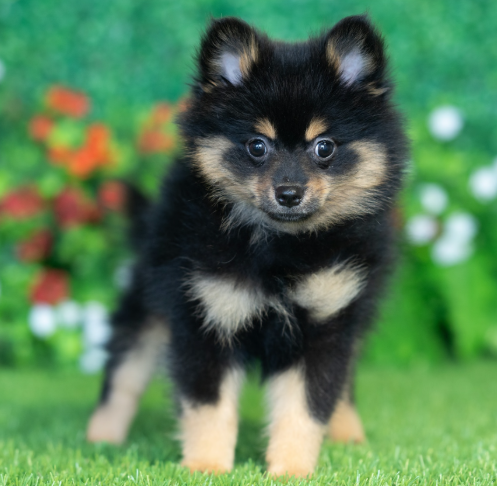Welcoming a new puppy into your home is thrilling — lots of cuddles, playful energy, and boundless curiosity. But training is one of the most important gifts you can give both your puppy and yourself. At Blue Sky Puppies, we believe that building a foundation of trust, consistency, and positive reinforcement early on sets the stage for a well-behaved, confident dog.
Here are practical, beginner-friendly tips to get you started with basic commands:
1. Begin with the Right Mindset
-
Keep sessions short and fun — Puppies have short attention spans, so 5 to 10 minutes per session is plenty.
-
Stay consistent — Use the same cues (words or hand signals) every time so your puppy can associate them clearly.
-
Always reward positive behavior — Whether it’s a treat, a kind word, or gentle petting, reinforce good responses immediately.
-
Be patient and calm — Mistakes will happen. When that occurs, reset and try again without frustration.
2. Essential Commands to Teach Early
These commands are not just tricks — they help keep your puppy safe and in control in everyday situations.
Sit
-
Hold a treat near your puppy’s nose.
-
Slowly move the treat upward, guiding their head back and naturally encouraging their bottom toward the floor.
-
As soon as they sit, say “sit,” then immediately reward.
-
Repeat, gradually phasing out the treat and relying on the cue word alone.
Stay
-
Ask your puppy to sit.
-
With your hand open and palm facing them, say “stay” as you slowly take a step back.
-
If they hold their position even for a few seconds, return and reward.
-
Gradually increase the distance and duration.
Come / Recall
-
Start indoors or in a low-distraction fenced space.
-
Use a short leash and lure your puppy toward you while saying “come.”
-
When they reach you, reward them lavishly.
-
Over time, practice off leash (if it’s safe) in a controlled space.
Heel / Walk Nicely
-
Begin on a short leash.
-
Keep your puppy on your left side.
-
Use a toy or treat held at your side to encourage them to walk close.
-
Each time they pull ahead, stop walking. Only move forward when the leash is loose again.
-
Use the command “heel” consistently.
3. Add Bonus Commands: Touch & Look (or “Eyes”)
While the core four (sit, stay, come, heel) are essential, commands like Touch and Look (or Eyes) can be incredibly useful:
-
Touch: Teach your puppy to touch your hand with their nose. It’s a gentle way to regain their attention or redirect focus. (Many trainers use this as a positive interruption.)
-
Look (Eyes): Encourage your puppy to make eye contact with you. This reinforces engagement and focus when distractions arise.
These bonus cues can make your training more flexible and responsive.
4. Troubleshoot Common Challenges
-
Puppy gets distracted easily: Return to basics in a quieter environment before gradually adding distractions.
-
Commands don’t stick outdoors: Repetition and gradual exposure to more stimuli help. Make outdoor training rewarding.
-
Overexcited jumping or mouthing: Pause training, wait for calm behavior, then resume. Don’t reward attention-seeking behaviors.
-
Inconsistency among family members: Make sure everyone uses the same cue words and follow the same rules.
5. Create a Training Plan & Track Progress
Here’s a suggested weekly plan:
| Day | Command Focus | Notes |
|---|---|---|
| Day 1 | Sit & Stay | Short sessions (3–4 repeats) |
| Day 2 | Come | Indoors followed by backyard |
| Day 3 | Heel / Walking | Use treats to shape desired position |
| Day 4 | Review all previous | Combine commands into mini-routines |
| Day 5 | Introduce Touch / Look | Use lure + reward initially |
| Day 6 | Practice in low distraction outdoors | Increase exposure gradually |
| Day 7 | Rest or light refresher | Keep it fun, don’t push too hard |
Record your puppy’s response levels, which cues need more work, and progress over time.
6. When to Seek Professional Help
If your puppy struggles excessively with a command or displays fear, aggression, or anxiety, it’s wise to consult a certified dog trainer or behaviorist. Early intervention is always easier than trying to undo ingrained behaviors later.
Final Thoughts
Training is not just about commands — it’s about building a bond of trust and clear communication between you and your puppy. At Blue Sky Puppies, we encourage you to:
-
Be consistent and kind
-
Make training a positive, predictable routine
-
Challenge yet respect your pup’s limits
With the right approach and patience, your puppy will grow into a well-mannered, joyful companion.




